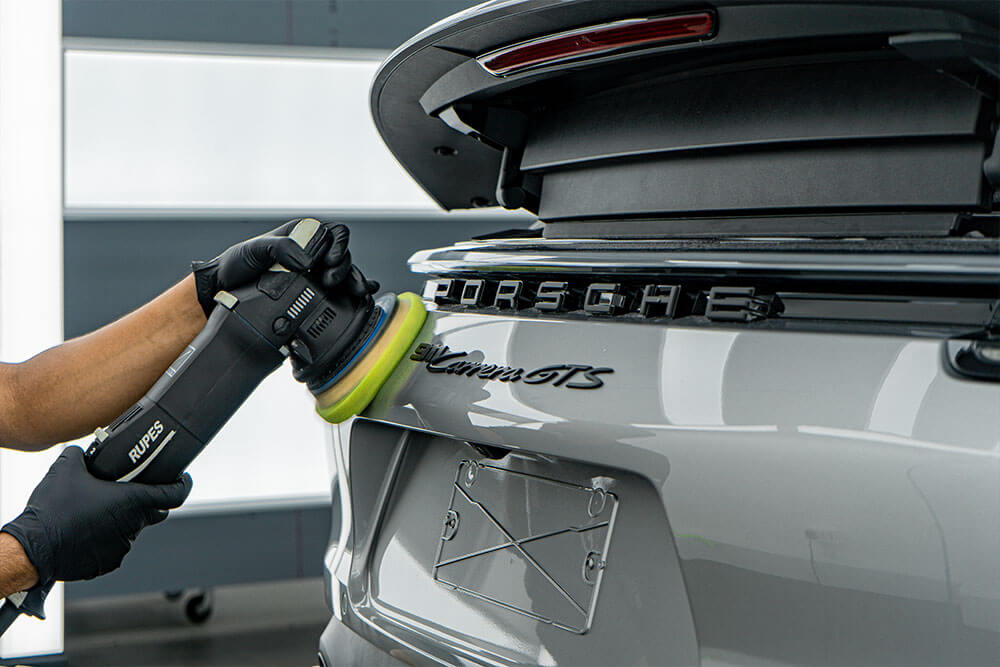
That final lease inspection isn’t just a formality; it’s a financial audit where every scratch longer than a credit card has a price tag. As we move into the latter half of 2025, leasing companies are becoming increasingly stringent, with penalties for “excess wear and tear” on paintwork regularly costing anywhere from $400 to over $1,000 per damaged panel. For a lessee, this transforms the daily drive into a constant financial risk, where a single stray rock chip on the highway or a scrape in a tight parking garage could translate directly into a significant, non-negotiable bill at the end of your term.
This reality reframes the entire debate around protecting a car you don’t own. The question is no longer an emotional one about keeping the car looking nice; it’s a cold, hard calculation. Is making a proactive, one-time investment in a partial PPF on car installation a smarter financial strategy than risking an unpredictable, and potentially much larger, penalty in 24 or 36 months?
It’s time to run the numbers. We’re breaking down the real-world cost-benefit analysis of using car protection film as a financial shield, comparing the price of targeted, upfront protection against the high cost of lease-end penalties.
The Costly Reality of “Excess Wear and Tear”
The term “excess wear and tear” can seem vague, but leasing companies define it with surprising precision. We’re not talking about catastrophic damage; we’re talking about the kind of minor issues that accumulate over a few years of daily driving. Most lease agreements have specific, non-negotiable thresholds. For example, many consider scratches longer than a credit card or multiple rock chips on a single panel to be excessive.
This is where the financial danger lies. Once you cross that threshold, the penalties can be severe. It’s common for lease-end charges for paint damage to range from $400 to over $1,000 per panel. These fees aren’t arbitrary; they are calculated to cover the cost of restoring the car to a pristine, resalable condition, and the final inspection is often strict. A few unlucky encounters with road debris on the highway or a single scrape in a tight garage could easily result in a final bill that runs into the thousands, turning what you thought was a worry-free lease into a significant unexpected expense.
PPF as Your Financial Shield
This is where installing PPF on car you lease becomes a calculated financial strategy. Think of car protection film not as a cosmetic upgrade, but as a form of insurance against those unpredictable lease-end penalties. It acts as a sacrificial, invisible shield that absorbs the very damage—rock chips, minor scratches, and scuffs—that leasing companies penalize you for.
Crucially, PPF is a non-permanent modification. Since the film is fully removable and its sole purpose is to preserve the original factory paint beneath, it is generally accepted by leasing companies. In fact, some lessees report that dealerships are happy to see a car returned with PPF, as it proves the vehicle has been meticulously cared for and helps preserve the asset’s value for resale. The ultimate goal of the lease agreement is for you to return the car in a “like-new” condition. PPF is one of the most effective tools available to ensure you meet that standard, potentially eliminating those costly damage fees entirely.
The Smart Calculation: Partial PPF vs. Potential Penalties
For a lessee, the financial logic isn’t about protecting the car for its next owner; it’s about protecting your own wallet at the end of the lease. This is where a smart, targeted approach to car protection film becomes a powerful financial tool. You don’t need to wrap the entire vehicle. The most cost-effective strategy is a partial installation that focuses exclusively on the high-impact zones most likely to incur penalties.
A typical “Partial Front End” package is the perfect solution for a leased vehicle. This installation of PPF on car surfaces covers the areas that face a constant barrage of road debris: the full front bumper, the leading 12-14 inches of the hood, and the side mirrors. Now, let’s run the numbers. A partial front-end installation is a one-time cost. In contrast, a single deep scratch or a collection of chips on just the front bumper could easily result in a lease-end penalty of $400 to over $1,000.
When you compare the proactive, fixed cost of a partial PPF wrap against the reactive, and potentially much higher, cost of a single damage penalty, the calculation is clear. The investment in targeted protection is often significantly less than the fees you would pay for just one unlucky incident on the highway.
The Verdict: A Smart Investment for the Modern Lessee
So, what’s the final verdict in this financial calculation? The risk of incurring several hundred, if not thousands, of dollars in damage fees over a typical two or three-year lease is remarkably high for the average driver. The daily commute, highway driving, and tight city parking all but guarantee some level of minor damage that can easily cross the strict “excess wear and tear” threshold.
When you weigh the numbers, the conclusion is compelling. A targeted, partial car protection film installation is not an expense you’re paying for the car’s next owner; it’s a smart, calculated investment to protect your own finances from unpredictable and often inflated lease-end charges. The proactive cost of putting PPF on car high-impact zones is frequently less than the reactive penalty for repairing a single damaged panel.
For the modern lessee, it’s a strategic move that provides both financial security and peace of mind. We encourage you to review the specific wear-and-tear clause in your lease agreement. Then, consider a partial PPF installation not as a modification, but as the most effective insurance you can buy for a worry-free driving experience and a penalty-free lease return.


